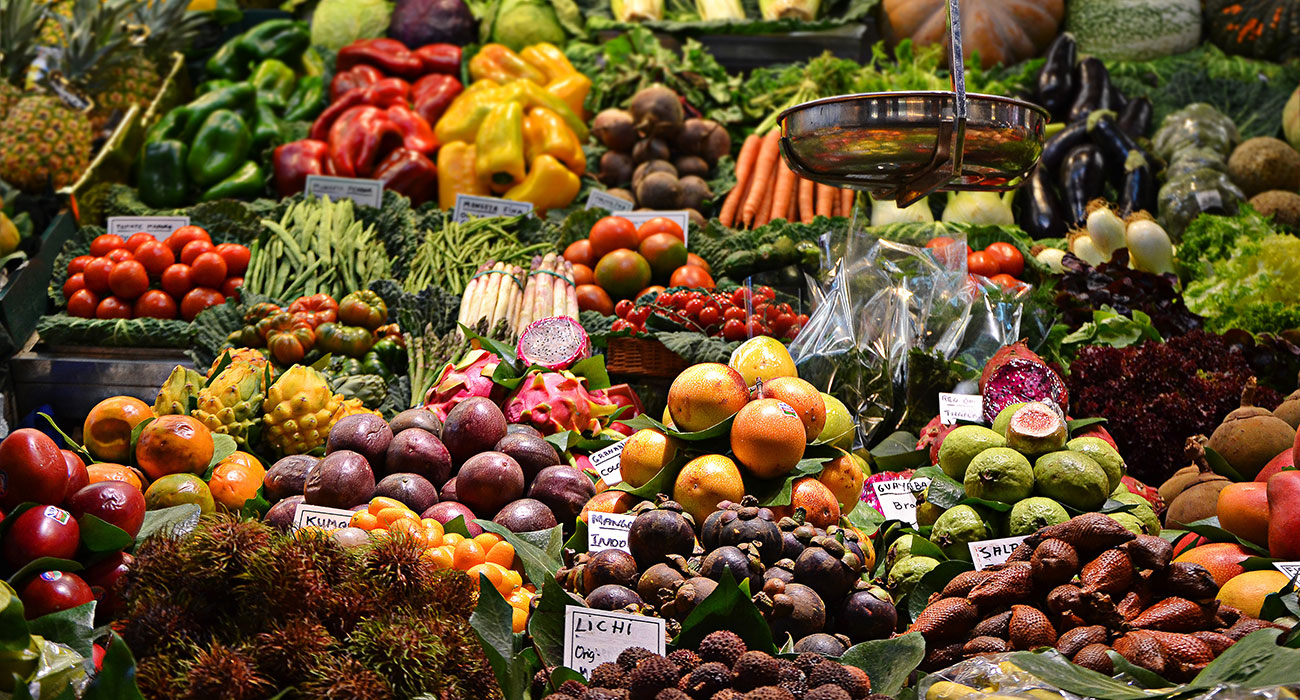
Circularity@Food Loss and Waste Reduction
The United Nations’ World Food Report 2019 makes it clear: “#ZeroHunger” is not just about fighting hunger, but also about saving the planet by providing proper nutrition. The report demonstrates that holistic approaches are needed to address food loss and waste (FLW) as part of the Circular Economy.
The Context
Circularity and Sustainability: A Systemic View
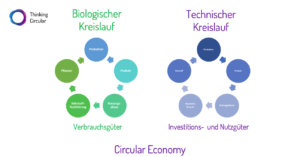 Ciruclarity and sustainability are terms often used together and somewhat interchangeably, what dilutes the importance and value of the actions related to either one. To help organizations see more clearly how and where they can be a part of the system, it is important to communicate more explicitly how the two terms relate to each other what distincts them from each other.
Ciruclarity and sustainability are terms often used together and somewhat interchangeably, what dilutes the importance and value of the actions related to either one. To help organizations see more clearly how and where they can be a part of the system, it is important to communicate more explicitly how the two terms relate to each other what distincts them from each other.
Moving from vision to implementation, though, the space under the sustainability paradigm gets crowded. The systemic perspective of it is grounded in and focused on the biosphere – the left-hand side of the now-famous “butterfly diagram”. It evolved from the fields of ecology and environmental science, which gave sustainability the holistic, systems-based view. It is also biased towards natural systems. Circular systems do exist here – such as the carbon cycle, nitrogen cycle, water cycle, or even full ecosystems. However, food, water, and other materials in this space will cycle regardless of what we do as a species – contributing to confusion around what should be considered “circular.”
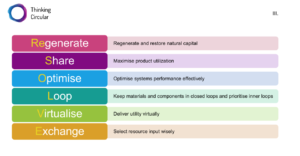 The systemic practice of circularity is focused on and grounded in the technosphere – a human construct designed to support the conversion of raw materials for human consumption beyond simple survival needs of food and water. The intentional design of a system is what separates circularity from sustainability. Cycling materials in the technosphere needs to be part of the design, since it is not something that happens without intervention. Circularity and the circular economy address the lack of cycling and define how to manage the transition to a greater appreciation and understanding of all activities under the Sustainability umbrella.
The systemic practice of circularity is focused on and grounded in the technosphere – a human construct designed to support the conversion of raw materials for human consumption beyond simple survival needs of food and water. The intentional design of a system is what separates circularity from sustainability. Cycling materials in the technosphere needs to be part of the design, since it is not something that happens without intervention. Circularity and the circular economy address the lack of cycling and define how to manage the transition to a greater appreciation and understanding of all activities under the Sustainability umbrella.
A circular economy seeks the continuous flow of technical and biological materials through the so called ‘value circle’. This ensures enhanced flows of goods and services, what helps to rebuild capital, whether this is financial, manufactured, human, social or natural.
According to Champions 12.3 approximately one-third of all food produced in the world intended for human consumption is lost or wasted. This level of inefficiency in the global food system has significant economic, social, and environmental impacts. It amounts to economic losses of $940 billion per year (FAO 2015). It means that more than a billion tons of food never get consumed each year, while one in nine people remain undernourished (WFP 2018). In addition, food loss and waste is responsible for an estimated 8 percent of annual greenhouse gas emissions; if it were a country, food loss and waste would be the third largest emitter after China and the United States (CAIT 2018; FAO 2015).
World Food Day Meets World Gastronomy Day
Our Actions are our future
The United Nations declared October 16 of each year World Food Day – also known as World Hunger Day. This was followed in 2017 by the Day of Sustainable Gastronomy, in which German restaurant owners participated in campaigns for the first time in 2018.
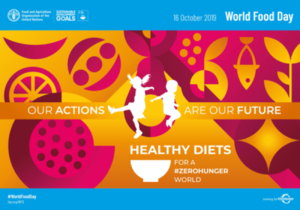 UN World Food Day
UN World Food Day
The theme of World Food Day 2019 was “Our Actions Are Our Future”. Healthy diets for a “#ZeroHungerWorld“. The motto refers to the second of the 17 Sustainable Development Goals of the UN Agenda 2030.
The World Food Day is intended to draw attention to the fact that millions of people worldwide still suffer from hunger. The 2019 report makes it clear that “#ZeroHunger” is not just about fighting hunger, but also about protecting the planet with a proper nutrition system. Therefore, intersectoral action is required to make healthy and sustainable nutrition affordable and accessible to everyone. At the same time, everyone is called to think about what we eat.
UN World Sustainable Gastronomy Day
Against this background, the United Nations proclaimed in 2016 the Sustainable Gastronomy Day on 18 June. On this day actions are taking place worldwide. Since 2018, the German hotel and catering industry (hospitality industry) has been involved in this in cooperation with the German Sustainability Day.
The starting point is the social media activities of Grenntable e.V.. Once a year, from May 25 to June 18, restaurant and hotel owners and guests are invited to post their ideas and best practices for a sustainable engagement to the industry under the hashtag #GastroForFuture.
The Business Case for Sustainable Food
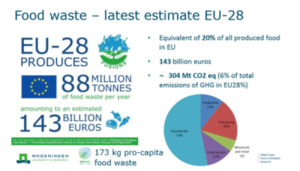
Source: Wageningen Food & Biobased Research
On behalf of Champions 12.3, the authors of the study The Business Case for Reducing Food Loss and Waste published a sector specific study for the hospitality industry focussing on hotels: THE BUSINESS CASE FOR REDUCING FOOD LOSS AND WASTE: HOTELS . They reacted to a frequent request by business leaders: “The 2017 publication gave a good overview across industry sectors, but we want to know what our sector looks like alone.”
In total, the authors had data about food waste-reduction efforts from 42 hotel sites across 15 countries. Based on these data, we calculated the benefit-cost ratios, cost reductions, payback periods, and investments made. We then conducted interviews with managers, including managers of the data providers from these hotel sites, to identify what actions the sites took to reduce their food waste.
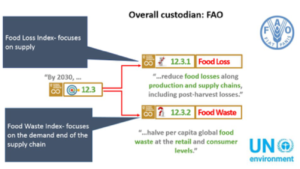 From the pool of data the authors could access, 95 percent of the sites analyzed had a net positive financial return; that is, a benefit-cost ratio greater than one-to-one (1:1). The average benefit-cost ratio was nearly 7:1. Expressed in terms of return on investment (ROI), this is a nearly 600 percent return on investment.1 The median benefit-cost ratio—where half of the sites achieved a higher ratio while half achieved a lower ratio— was nearly 5:1 (Figure 1). Thus, for every $1 (or other relevant currency) invested in food waste reduction, half of the sites realized a nearly $5 return or greater.
From the pool of data the authors could access, 95 percent of the sites analyzed had a net positive financial return; that is, a benefit-cost ratio greater than one-to-one (1:1). The average benefit-cost ratio was nearly 7:1. Expressed in terms of return on investment (ROI), this is a nearly 600 percent return on investment.1 The median benefit-cost ratio—where half of the sites achieved a higher ratio while half achieved a lower ratio— was nearly 5:1 (Figure 1). Thus, for every $1 (or other relevant currency) invested in food waste reduction, half of the sites realized a nearly $5 return or greater.
Solutions and Practices for Prevention and Management of Food Loss and Waste FLW
On a global scale, scientists and policy-makers continue to work toward FLW reduction strategies that address food waste at each stage of the FSC, adopting a sustainable production and consumption approach and most recently a circular economy approach. The implementation of these strategies must be adapted to the region, with particular consideration toward local infrastructure, energy, markets, and education, i.e., knowledge at all levels from supplier to consumer (e. g., Majid Shafiee-Jood).
Food safety is the top priority in mitigating FLW; most technological solutions support the prevention of food contamination and quality degradation. Intervention at upstream stages benefits end-users. Coupled with improved infrastructure, these measures are technological priority.
Reducing FLW at the individual consumer level in developed countries would create the biggest impact along the supply chain. One major point of education is improving understanding of “best before,” “expires by,” and “use by” dates on packaging (Ulrich Koester) ; coupled with retailers changing food date labeling practices. Other in-home practices, such as planned purchases, better storage practices, appropriate portion sizes, improved food preparation, and use of leftover food in meal preparation all reduce FLW. Retailers, restaurants and caterers can mitigate FLW by facilitating donations of unsold goods, implementing appropriate food portions, shifting in-store promotions to reduce potential unnecessary FLW, and through safe food storage practices (Lipinski, B., et al).
Although this is an extremely important issue for decision makers, there are very few potential policy solutions and/or recommendations in the FLW literature:
- Financial support, especially in developing countries, to improve roads and energy infrastructure as well as the machinery used;
- Institutional arrangements and reforms to facilitate access of the private sector investment to agricultural production;
- Holistic approach/circular economy approach: focus on the causes of FLW as well as the consequences, regional and country differences; and the stakeholders and actors involved;
- Communication and education campaigns targeted to reduce food waste;
- The use of taxes and subsidies o decrease wasteful behavior among consumers.
As a conclusion, there is general consensus on the fact that reducing FLW has great potential for enhancing food security, strengthening sustainability of food systems and avoiding economic costs along the Food Supply Chain FSC, however there are substantial gaps in knowledge and research about FLW. More holistic approaches are necessary to tackle FLW as part of the circular economy, particularly on the socio-economic and environmental impacts of FLW reduction strategies across FSC stages in different regional and development contexts—considering, among others, infrastructure, energy, markets, and education.
Author: Dr. Hans Meves



No Comments